When it comes to fruit-bearing trees, few can rival the beauty and versatility of pear trees. With their stunning blossoms, lush foliage, and delicious fruits, they are a cherished addition to gardens and landscapes around the world. Whether you’re a seasoned gardener or a beginner looking to enhance your outdoor space, understanding the different types of pear trees can help you make informed choices for your garden.
In this article, we will explore 16 distinct types of pear trees, highlighting their unique characteristics, growth habits, and the delectable fruits they produce. From the classic Bartlett to the ornamental Bradford, each variety offers something special.
Join us as we delve into the world of pear trees, complete with pictures and identification tips to help you recognize and appreciate these magnificent trees in your own backyard.
Different Types of Pear Trees
Sunrise Pear Tree
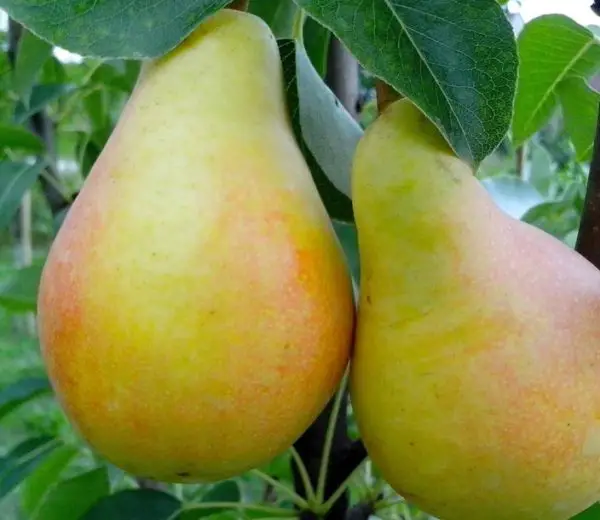
The Sunrise pear tree is a hybrid variety, carefully developed for its excellent resistance to fire blight, a common pear tree disease. It is considered relatively small in size, with a mature height of about 7 to 10 feet and a spread of 5 to 7 feet, making it ideal for compact spaces such as home gardens or smaller orchards. Despite its smaller stature, the Sunrise pear tree is known for its productivity and high-quality fruit.
For optimal growth and maximum harvest, the Sunrise pear tree requires around 600 chilling hours during the winter months. These chill hours are essential for breaking dormancy and promoting healthy fruit development. The fruits of the Sunrise pear tree are typically ready for harvest in August, offering early-season pears that are sweet and juicy.
In spring, the tree produces clusters of white blossoms, which later give way to its medium-sized yellow-green pears. The tree’s compact size and disease resistance make it a low-maintenance option, suitable for growers looking for a reliable pear tree. The Sunrise pear’s adaptability and strong disease resistance, especially to fire blight, contribute to its popularity among both home gardeners and commercial growers.
Gorham Pear Tree
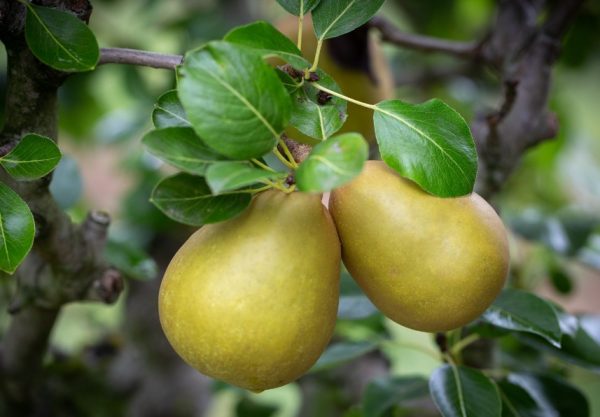
The Gorham pear tree is a variety similar to the Bartlett pear but with slight improvements, particularly in its resistance to pests and scab, making it more resilient in certain growing conditions. This pear tree thrives in areas with a mild, dry climate, where it can produce its best yield. One of its distinctive features is its small size, growing to only about 6 feet tall, making it one of the smallest pear tree varieties available, ideal for compact gardens or limited spaces.
The fruits of the Gorham pear tree are best enjoyed when they are half-ripe, offering a unique, mild acidic flavor that sets them apart from other pear varieties. The tree’s fruit matures to a yellow-green color and is typically harvested in late summer to early fall.
Due to its small size and improved resistance, the Gorham pear tree is easy to care for and requires less maintenance compared to other types. Its moderate growth rate, combined with its pest resistance and scab resilience, makes it a practical choice for home gardeners who want a hardy pear tree that doesn’t demand much space or effort.
Seckel Pear Tree
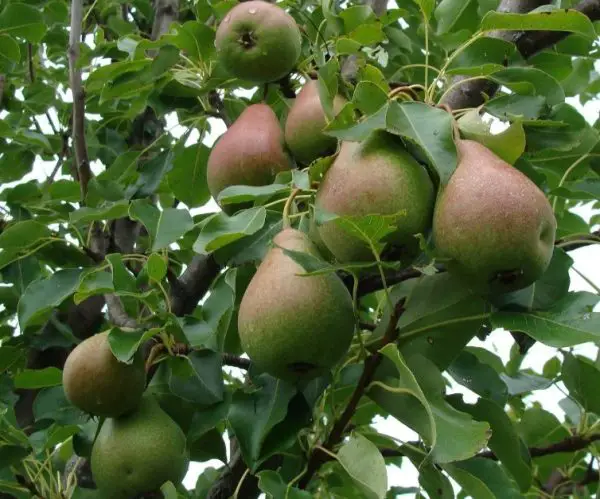
The Seckel pear tree, with its American heritage, was first cultivated in the United States and is well-loved for its compact size and sweet fruit. Reaching a height of 12 to 15 feet, the Seckel pear tree fits into the semi-dwarf category, making it a good choice for smaller gardens or orchard spaces. Its moderate height offers the benefits of easier management and harvesting without sacrificing fruit quality.
Seckel pears are often referred to as “sugar pears” or “candy pears” due to their exceptional sweetness and small, golden-brown appearance. The fruit is smaller than other pear varieties but packs a rich, sweet flavor, making it a favorite for fresh eating, canning, or desserts. The pears are typically ready for harvest in late September, offering a delightful treat for fall.
This pear tree variety is also appreciated for its resilience and ease of care, making it suitable for both novice and experienced gardeners. In the spring, it produces fragrant white blossoms, followed by its small, sweet fruits. With its manageable size and delectable pears, the Seckel pear tree is an excellent option for those looking for a flavorful, low-maintenance fruit tree.
Anjou Pear Tree
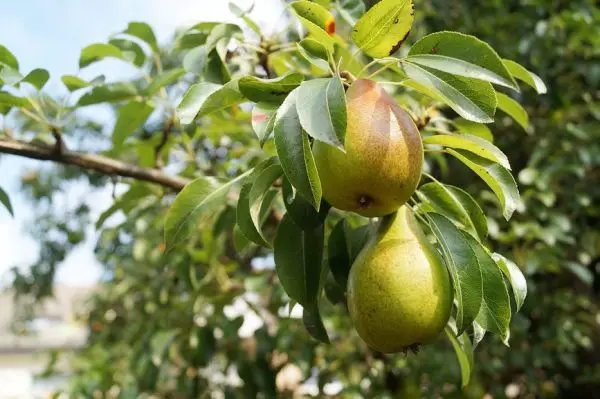
The Anjou pear tree, originating from Belgium, is known for producing pears with a creamy, buttery texture and sweet flavor. The tree itself has a unique oval-shaped canopy and can spread out from 8 to 20 feet, with a mature height ranging from 10 to 18 feet. This makes it a versatile tree, fitting both small and larger garden spaces. Anjou pears typically reach full ripeness between late September and mid-October, which is the ideal time for harvesting.
In the spring, the tree blooms with beautiful white flowers, followed by the development of its smooth, green or red pears. Anjou pears are highly prized for their versatile use in both fresh eating and cooking due to their rich, creamy taste.
The Bosc pear tree, also mentioned, is renowned for its late-ripening fruit, often called “winter pears.” Bosc pears blossom in late April, with their distinctive russet-brown fruit ready for harvest in late September. The Bosc pear tree can grow to a mature height of 12 to 18 feet, placing it in the semi-dwarf category. This variety continues to provide fruit even after other pear trees have finished for the season, making it a valuable addition to any orchard. Both the Anjou and Bosc pear trees offer excellent fruit and are loved for their unique qualities.
Starkrimson Pear Tree
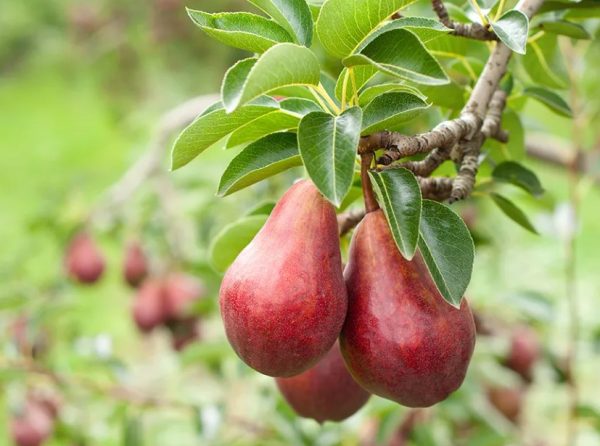
The Starkrimson pear tree, originally discovered in Missouri, is known for its vibrant red fruit and juicy, sweet flavor. Growing to a height of 13 to 16 feet, this pear tree is also resistant to cold weather, making it a hardy option for various climates. One of the tree’s most distinctive features is its striking bright red pears, which turn deep red when fully ripe, creating a visually appealing contrast in any garden or orchard.
The Starkrimson pear tree blooms in late spring, producing beautiful white blossoms before the fruit begins to develop. Harvest typically occurs around August, offering early-season pears that are perfect for fresh eating due to their sweet, succulent taste. The fruit’s unique color and sweetness make it a favorite for both home gardeners and commercial growers.
In addition to its beautiful appearance and delicious fruit, the Starkrimson pear tree is relatively easy to care for, with good disease resistance and cold tolerance. Its moderate size and striking red pears make it a standout addition to any landscape, providing both visual beauty and a rewarding harvest.
Pineapple Pear Tree
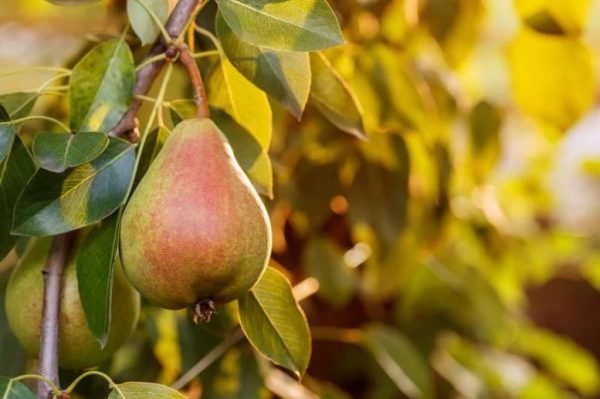
The Pineapple pear tree is a remarkable species known for its unique fruit, which has a delightful taste reminiscent of pineapple. This tree blooms early in spring, filling the air with fragrant white blossoms before developing its distinctive fruit. The pears are typically ready for harvest around mid-July, making them a popular choice for those seeking early-season produce.
Pineapple pear trees thrive best in warm climates, where they can reach impressive heights ranging from 15 to 20 feet. This makes them a striking addition to any landscape, providing not only delicious fruit but also an attractive presence in the garden.
In addition to their unique flavor and aesthetic appeal, Pineapple pear trees are noted for their resistance to blight, making them a low-maintenance option for gardeners. The combination of their resilience and the delicious, tropical flavor of the pears makes them a favorite among both home growers and commercial producers.
Comice Pear Tree
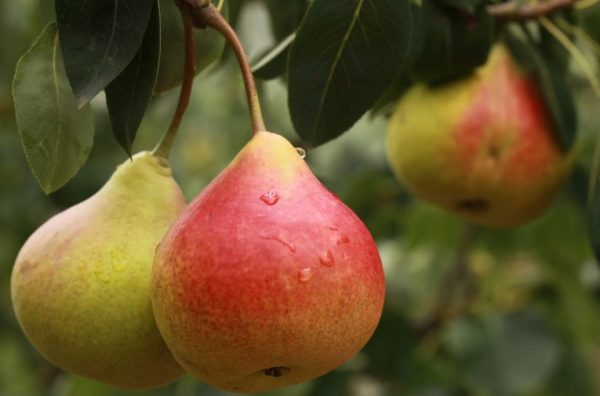
The Comice pear tree, native to France, is a smaller-sized variety compared to other pear trees. It typically grows to a height of 12 to 18 feet and can live for up to 75 years, making it one of the longest-living pear tree species. The Comice tree is self-fertile, meaning it can produce fruit on its own, but it yields much better when cross-pollinated with another pear variety.
The fruits of the Comice pear tree are known for their firm texture, sweetness, and fine structure, making them a popular choice for eating fresh or using in desserts. They have a rounder shape compared to other pears, and the skin is often green with a slight blush of red as it ripens. The tree’s leaves are dark green, oval-shaped, and have serrated edges.
In spring, it produces white blossoms that are fragrant and attract pollinators like bees. This pear tree variety is also relatively low-maintenance, making it a favorite among both home gardeners and commercial growers. Recognizing a Comice pear tree can be done by looking for its compact size, rounded fruits, and the characteristic white blooms during its flowering period. Its fruits are usually harvested in late summer to early fall.
Kieffer Pear Tree
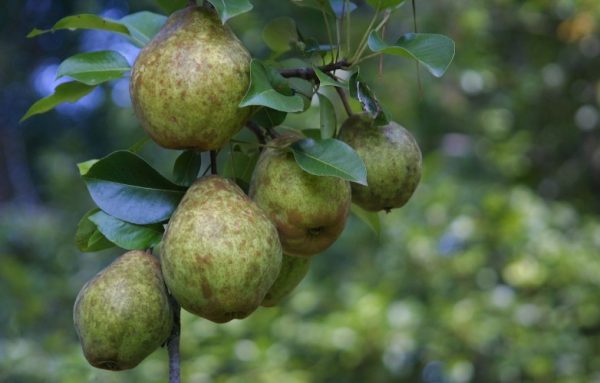
The Kieffer pear tree is a hybrid variety, combining the qualities of the Asian Pear and Bartlett. This tree produces large, yellow pears that often display a rosy blush, making them visually appealing. The Kieffer pear is known for its hardiness and ability to thrive in a variety of conditions, making it a reliable option for many growers. It is a self-fruitful tree, meaning it doesn’t require another tree for pollination, but additional trees can increase fruit yield and quality.
Kieffer pear trees can vary significantly in size, with their height ranging from 10 to 20 feet. This flexibility makes them suitable for different types of gardens and orchards. To ensure optimal growth, Kieffer pear trees require approximately 350 chilling hours during the winter months. These chilling hours help the tree break dormancy and prepare for the growing season.
In spring, the tree produces beautiful white flowers, followed by the development of its distinct fruit. The pears are typically ready for harvest in late summer to early fall. The Kieffer pear is valued not only for its size and hardiness but also for its versatile use, whether eaten fresh or used in canning and cooking.
Concorde Pear Tree
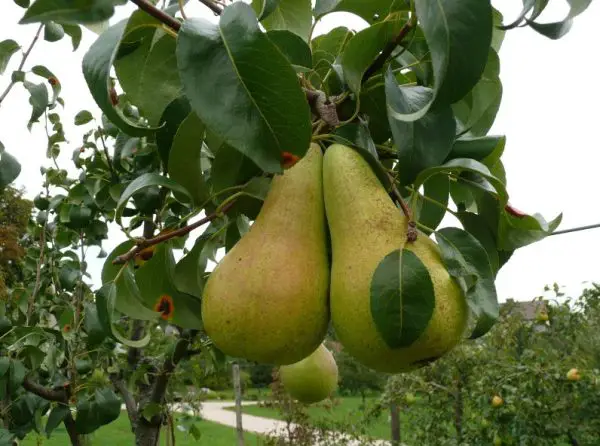
The Concorde pear tree, originating from the UK, is a self-fertile variety, meaning it doesn’t need a pollinator to produce fruit, although it can still benefit from one for enhanced yield. This pear tree is relatively compact, reaching a mature height of 9 to 13 feet, making it a great option for smaller gardens and orchards.
The fruits of the Concorde pear are distinctive due to their unique, elongated shape, setting them apart from other pear varieties. They are also prized for their subtle vanilla-like flavor, which makes them ideal for fresh eating as well as for use in various culinary dishes. The fruit’s skin is usually green, sometimes with a golden hue as it ripens.
In mid-autumn, the pears are ripe and ready for harvest. The tree’s white blossoms appear in the spring, adding beauty to the landscape before the fruit begins to form. Recognizing a Concorde pear tree can be done by its moderate size, the slender shape of its fruits, and the smooth, sweet taste of its harvest. This tree is low-maintenance and well-suited for those looking for a productive yet compact fruit tree.
Forelle Pear Tree
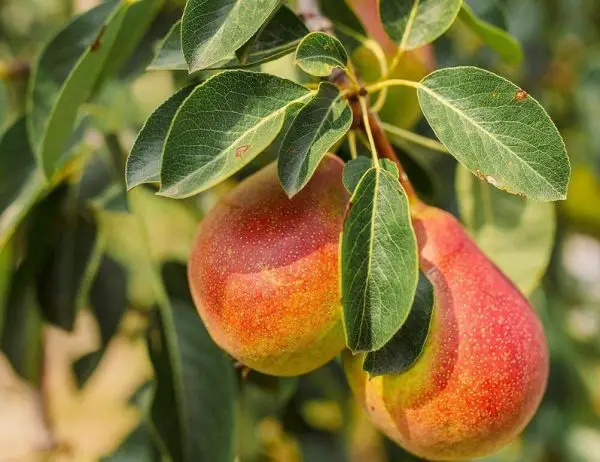
The Forelle pear tree, originally hailing from Germany, has gained popularity in the United States over the years. Known for its small, distinctive fruit, the Forelle pear is not only delicious but also packed with nutritional benefits, being high in potassium and fiber, which makes them an excellent choice for those leading a healthy lifestyle.
One of the unique characteristics of Forelle pears is their flavor, which has been described as having a hint of cinnamon, adding an intriguing twist to traditional pear taste profiles. The tree typically reaches a mature height of 12 to 16 feet, making it suitable for a variety of garden sizes.
In spring, the Forelle pear tree blooms with lovely white flowers that give way to its vibrant, speckled fruit. The pears are generally ready for harvest in late summer to early fall, offering a delightful treat for those who enjoy fresh fruit. With their unique flavor, nutritional benefits, and manageable size, the Forelle pear tree is a fantastic addition to any orchard or garden, appealing to both home gardeners and health-conscious individuals.
Summercrisp Pear Tree
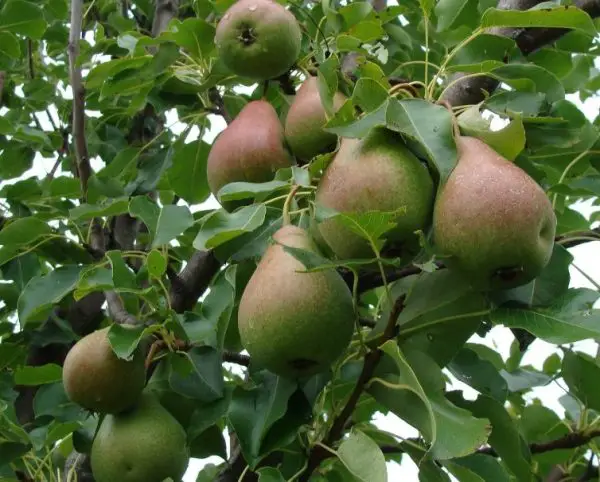
The Summercrisp pear tree is a hardy variety developed in the 1980s by the University of Minnesota, specifically bred to withstand cold climates. This tree is known for its unique, small, and crispy fruits, which are highly sought after for their delightful crunch and refreshing flavor.
Reaching a mature height of 15 to 20 feet, the Summercrisp pear tree has a spread of about 12 feet, making it suitable for a variety of garden sizes. Its cold-hardiness allows it to thrive in regions that experience harsh winters, providing reliable fruit production even in challenging conditions.
The Summercrisp tree blooms in spring, showcasing beautiful white flowers that attract pollinators. The fruits typically mature in late summer, offering an early harvest for those eager to enjoy their crisp texture and sweet taste. With its robust nature and appealing fruit, the Summercrisp pear tree is an excellent choice for gardeners looking for a resilient and productive pear variety that can thrive in colder climates.
Bartlett Pear Tree

The Bartlett pear tree is one of the most popular and widely cultivated pear tree species in the United States. Known for its juicy, sweet fruit, the Bartlett pear is a favorite among home gardeners and commercial growers alike. This variety requires chilling hours for optimal fruit production, typically needing around 600 hours of temperatures below 45°F (7°C) during the winter months to ensure a successful harvest.
The Bartlett pear tree has a moderate spread, ranging from 10 to 20 feet, and it can grow to a height of 12 to 20 feet, making it suitable for various garden sizes. In spring, the tree is adorned with clusters of fragrant white flowers that attract pollinators, followed by the development of its characteristic green to yellow pears.
Bartlett pears are generally ready for harvest in late summer to early fall, offering a delicious treat that is perfect for fresh eating, canning, or baking. With its rich flavor, versatility, and reliable production, the Bartlett pear tree remains a classic choice for those seeking to cultivate a productive and rewarding fruit tree.
Bradford Pear Tree
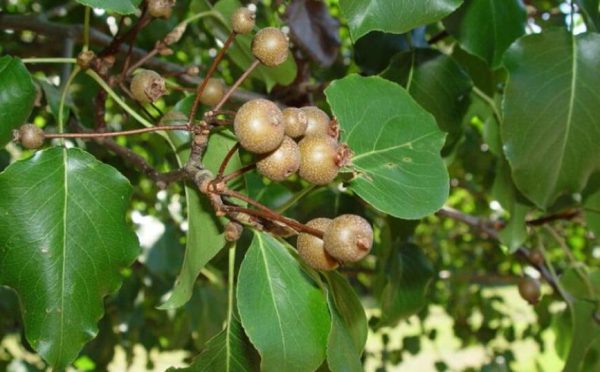
The Bradford pear tree is an ornamental variety renowned for its impressive height, typically reaching anywhere from 30 to 50 feet. Its distinctive pyramidal shape gives it an elegant presence in landscapes, and as it matures, the tree develops a wider spread, enhancing its visual appeal.
In spring, the Bradford pear tree showcases a stunning display of thousands of fragrant white flowers, creating a breathtaking sight that attracts pollinators and adds beauty to gardens and parks. The vibrant blooms are a hallmark of the tree, marking the arrival of spring with their striking appearance.
However, despite its beautiful looks, the Bradford pear tree is known for its structural fragility. Its branches can be weak and prone to breakage, particularly during storms or heavy winds. This characteristic has led to some concerns about its durability in urban and suburban settings. Nevertheless, the Bradford pear tree remains a popular choice for its stunning springtime display and its ability to provide shade and aesthetic value to outdoor spaces.
Chanticleer Pear Tree
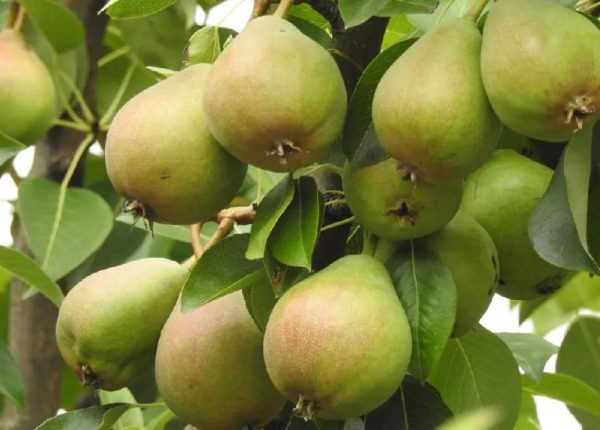
The Chanticleer pear tree, also known as the Cleveland Select pear, is a charming ornamental variety prized for its attractive form and resilience. This tree is known for its upright, narrow growth habit, making it an excellent choice for smaller spaces and urban landscapes. One of its key attributes is its resistance to breakage and blight, allowing it to thrive with minimal maintenance.
Chanticleer pear trees are best suited for warmer climates, where they can flourish and provide stunning visual appeal. In spring, they produce a spectacular display of fragrant white flowers, creating a beautiful contrast against the vibrant green foliage. This striking bloom makes the Chanticleer pear tree a favorite for landscaping, as it adds seasonal interest and beauty to gardens and parks.
In addition to their aesthetic qualities, Chanticleer pear trees also provide excellent shade and can serve as a habitat for birds and other wildlife. Their overall resilience and stunning blossoms make them a perfect choice for gardeners looking to enhance their outdoor spaces with a low-maintenance, decorative tree.

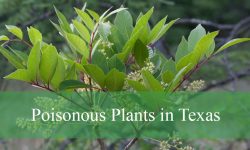
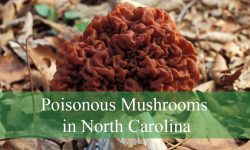




You might mention the Bradford pear (Callery) becomes invasive wild and thorny once pollinated by another pear. Many describe the scent as like cat urine. They can take over whole fields, sprouting from the roots. They are brittle and branches break off falling on cars & houses. They were once popular for fast growing, non-(self)fertile, lots of flowers but are now illegal to sell here, with good reason.